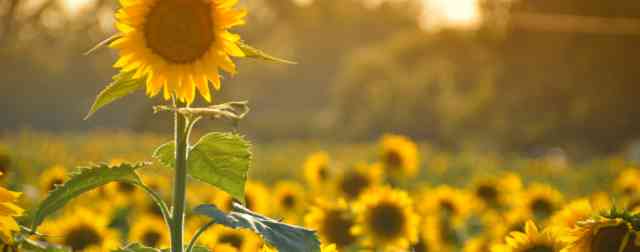Mushroom Hunting in Kansas
Kansans typically keep a close eye on the skies. But when mid-March rolls around, a secret society of foragers turns their eyes to the earth. These mysterious few have been dreaming of their elusive prey for weeks. The weather watch, check soil temps, and peruse online chatter for verified sightings. They speak of the who, what, why, and when but never the where. No hunt in Kansas is so privately guarded as this one. Conditions must be just so for their delicate finds to dot the fresh spring earth, and even then, the mysterious treasure shows up just when it is good and ready.
The mighty morel has many names: Hickory chicken, dry land fish, sponge mushroom, Molly moocher, and haystack. Call it what you like; this finicky fungus is without a doubt the darling of Kansas mushrooms. For some, the appeal is the mystery of the hunt. For others, it’s bragging rights. Regardless of the reason, every year, the circle of morel membership grows. Their unique appearance makes them easy to identify.
Whether flash-fried or sauteed, this crazy fungus has driven high-end dining establishments more crazy. These seasonal delicacies fetch anywhere from $10-$40 per pound, depending on the season. Morel sales are governed by Kansas law (see below), but most hunters opt not to sell them and choose to divide their spoils amongst friends and family.
Fungi is by nature complicated and particular and not exactly predictable. There are some loose rules you can follow to find morels, but keep in mind even the most seasoned hunters sometimes return home with empty sacks. Below are a few answers to the most commonly asked questions as well as some tips that can help you punch your Morel membership card like a pro:
SEE RED
Redbuds and morels follow a similar pattern of appearance. If redbud trees are in bloom, morels will also be in season. Get your skillet ready if there is a string of rainy days followed by temps in the 60s-70s. Early in the season, morels have more of a grey hue and are no more than a couple inches in height. This is when they are the hardest to spot. Later in the season, they will turn more yellow and grow anywhere from a few inches to just over a foot high! Yellow morels are much easier to find and provide foragers with more sustenance. Grey and yellow morels taste exactly the same. If you wait too long past May, morels can get brittle and are not as flavorful.
Live On The Edge
Early in the season, the edges of forested areas are great places to look. Open areas are warmed by the sun more easily than deep woods. Travel farther into the forest as the season progresses and the ground temperatures rise. Sandy “loamy” soil is another lucky place to check. Not too dry, not too wet south-facing slopes should be the first places you forage. South-facing land gets more sun in early spring, so it will have warmer ground temps which the morels prefer.
They Have A Type
Morels are choosy about where they decide to put down roots. Try your luck at the base of Elm, Ash, Poplar, and Apple trees. If these trees are dead or in any stage of dying (sloughing off bark), you will increase your chances of finding a smattering of delicacies.
It’s In The Bag
The best way to transport your ‘shroom stash home is in a mesh bag. This allows your morels to scatter spores as you walk and ensures you will have a fresh batch to look forward to next year. The best bags are mesh laundry bags, but potato bags or even bread bags with holes cut in them will work in a pinch.
And speaking of pinching, the jury is still out on whether it is best to pinch the morel off at the ground or provide a clean cut to the stalk. But whichever method you use, just make sure to leave the roots down in the ground.
Don’t Get Ticked Off
Ticks can suck the fun out of any outdoor adventure, and mushroom hunting is no exception. Plan ahead so you won’t have the constant distraction of these pests. Ticks generally travel from the ground up, so pay special attention to your clothing and footwear choices. Hiking boots are a must since you’ll be walking through rough terrain, and long slick boots can deter tick attachment. There are several insect repellent sprays that can be applied to clothing prior to your hunt that will end your insect anguish.
Slow And Low
Pack a lunch, and plan to spend a day out. Mushroom hunting can be one of the most zen and meditative experiences in Kansas. You’ll be seeing our beautiful state from a vantage point that is unique to this hunt. Enjoy it!
Morels hang out with other morels. If you see one, crouch where you are and scan the ground in a slow circle around you. Fungi are connected underground in a larger network that is invisible to our eyes. Once you’ve found them, you can track your finds with GPS or with meticulous note-keeping. Shake your bag a bit to “plant” some spores for your harvest next year, and just like that you have your own secret spot.
Oh, Where Oh Where
Kansans are a friendly bunch, but the question of where to hunt will be met with complete silence--consider yourself warned. If you’re lucky enough to have someone who will take you with them, that is generally the best way to learn to hunt. Since so much surrounding this fungus is a mystery, learning tricks of the trade from an experienced forager makes good sense. It also is a great idea to have an experienced hunter help you identify and verify any mushroom you find. As with any mushroom, you MUST do your research before you take a bite. This book is the gold standard of Kansas fungi.
Kansas State Parks and wildlife areas will also be an excellent option when it comes to mushroom hunting and foraging. Just keep in mind that any morels that you harvest on public land cannot be sold. They can only be enjoyed for personal consumption.
The moral of the story is...the hunt is on! Get up and pickin’ before the grey squirrels and mule deer beat you to ‘em.
Final Tip!
If you find morels on your own property or have been granted permission to hunt on someone else’s land, by all means, sell away! This link will guide you through Wild Harvested Mushroom sales in Kansas: https://agriculture.ks.gov/divisions-programs/food-safety-lodging/wild-mushrooms
Morel Mushroom Hunting FAQs
Can I hunt morel mushrooms in Kansas?
Yes! You can hunt morel mushrooms in Kansas. The season usually occurs during the spring from mid-March through May.
Morel Mushrooms in Kansas
Is it safe to eat morel mushrooms in Kansas?
Hunters should do their research prior to consuming any mushrooms, as some forms found in Kansas can be toxic.
Read More
Can I sell morel mushrooms in Kansas?
Morel mushroom sales are regulated by the Kansas Dept. of Agriculture. The Kansas Department of Agriculture (KDA) Food Safety regulations require that mushrooms (including morels) picked in the wild for sale must be individually inspected for safety by an approved mushroom identifier. You also cannot sell morel mushrooms found at Kansas State Parks or public land in Kansas.
Morel Mushroom Regulations
Can you hunt for morel mushrooms in Kansas State Parks?
Yes! Kansas State Parks and Wildlife Areas are open for morel mushroom hunting.
Kansas State Parks
Can I sell morel mushrooms that I harvest from Kansas State Parks or public land in Kansas?
No, you cannot sell morel mushrooms that you harvest from Kansas public lands. (K.A.R 15-8-20).
Morel Mushroom Laws - Kansas State ParksSpring
Spring is the premier time to come to Kansas. This time of year comes with cool breezes, plenty of rain, and blossoming flowers!
Kansas Seasonal Favorites
Kansas farmers, residents, and visitors alike, all must to adjust to the seasonal weather. Some of the best times to witness…
Parks + Nature
Kansas has 28 state parks with over 10,000 campsites. Reserve a cabin or even a yurt for a weekend on the lake. Kansas parks are a…
Farmers Markets
Are you in search of a healthy variety of quality local farm fresh produce along with a mix of value added products such as baked…
Trails
All Kansas state parks and many wildlife areas and fishing lakes have hiking trails available that encompass a diverse variety of…
State Parks
In a nation of natural treasures, Kansas’ state parks shine like diamonds.
Sports + Outdoors
In the stands or on the field, Kansas has experiences that will get your heart pounding. Kansas is home to some of the…










